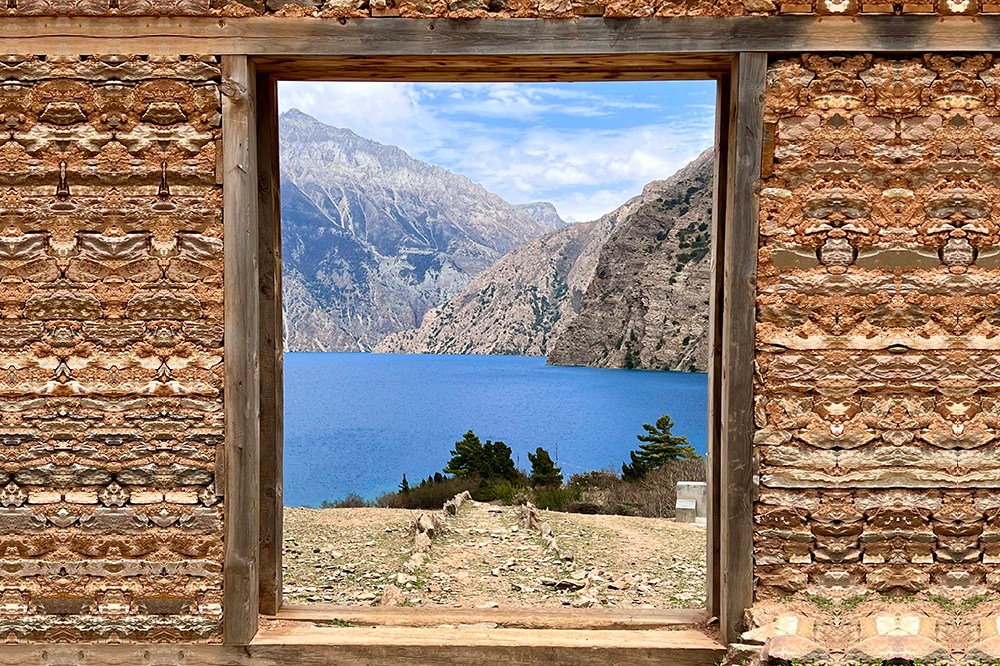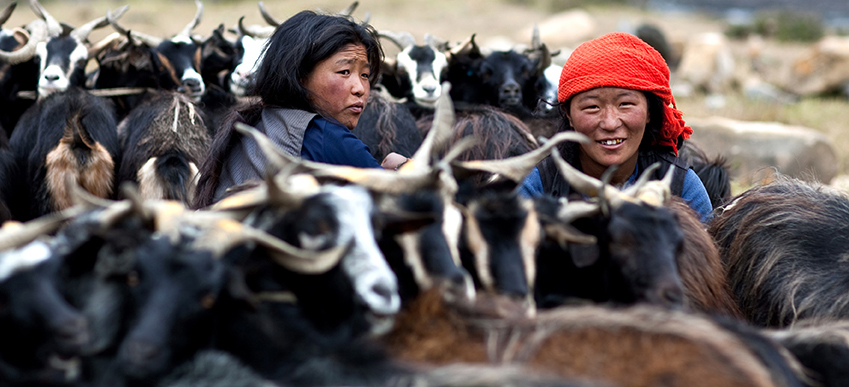
Lower Dolpo Circuit Trek
- Home /
- Nepal /
- Trekking & Hiking /
- Dolpo Region /
- Lower Dolpo Circuit Trek
Lower Dolpo Circuit Trek route is combined zone of ancient trading center in the west remote area of Nepal, the area occupied by Tibetan Buddhism followers, ethical remote villages, wild nature and landscapes up to 5,000 m / 16,400 ft. passes, turquoise lake Phoksundo with the famous Himalayan Natural Herbal Cordyceps sinesis or Yarchagumba territories in West Nepal to Tibetan Border. Still Dolpo region still a remote and non-developed region.
Dolpo Circuit trekking is a fully Camping trek till the high passes Numa-La and Baga-La and some of the villages you may use the local guest house and have tested their traditional Dolpali taste as well. Lower Dolpo is a relatively less touristic and offbeat track in the shadow of High Himalaya Mt. Dhaulagiri and lap of the Kanjiroba Mountain range. The breathtaking view of vibrant nature, flowers, wildlife, lakes, and live Tibetan Buddhist culture and tradition from Tibet still present 100 years back. Make some side trips around the Phoksundo Lake, Monastery Excursions, and Temple Visiting. This is one of the very few remaining places where the Bon Po religion is practiced. Bon Po is similar and yet different from Buddhism – one difference being practitioners walk anti-clockwise round stupas and shrines.
For this trek, you need to take two domestic flights from Kathmandu to Juphal via Nepalgunj and connect with the local crew team for trekking. A special trek permit for lower Dolpo is required and needs to pay Shey Phoksundo National Park Entry fees.
Route Map
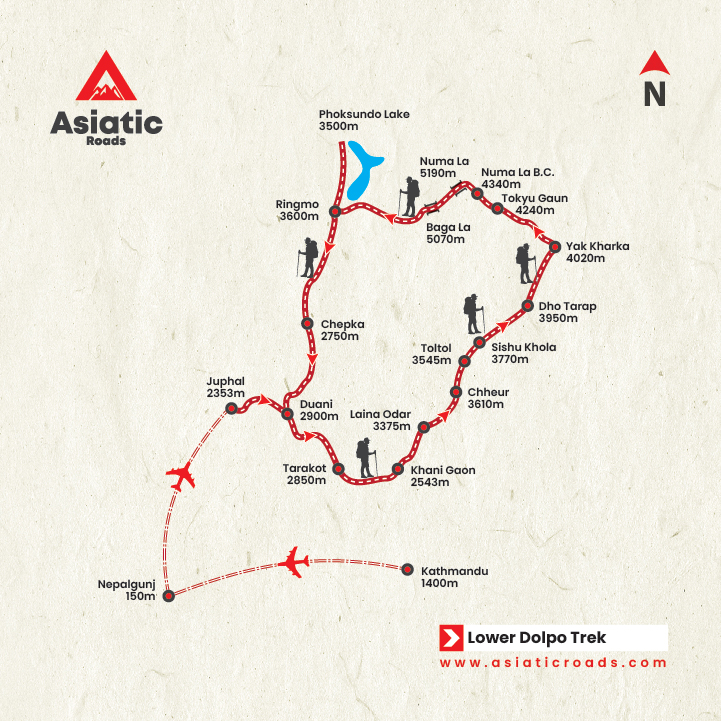
Itinerary In Detail
-
Day 01: Arrival in Kathmandu (1,400 m / 4,592 ft.)
Upon arrival in Katmandu’s Tribhuvan International Airport, meet, assist and transfer to hotel. After welcome refreshments and room check in the hotel, there will be a short briefing and orientation about the trip. Rest of the day is free for leisure.
Overnight at hotel.
-
Day 02: Fly to Nepalgunj (150 m / 492 ft.)
Spend a leisure morning; meanwhile we can apply your special restricted area trek permits at Department of Immigration. Dolpo region lies in restricted area, hence it is mandatory to obtain special trekking permit for all trekkers. While applying this permit it is compulsory to present your original passport, therefore we won’t be able to secure these permits prior to your arrival.
Pm: After lunch transfer to Kathmandu’s domestic airport to board the flight to Nepalgunj in Western Nepal, close to Indian Border. Upon arrival transfer to hotel for room check in.
Dinner and overnight at hotel.
-
Day 03: Fly to Juphal (2,494 m / 8,180 ft.) & trek to Dunai (2,150 m / 7,052 ft.) – 2 hours.
After breakfast transfer to Nepalgunj Airport to board the flight to Juphal Airport (Dolpa), where we will meet up with our trekking support team including cook & Sherpa assistant/s. After short preparation we start descend through local villages and terraced fields to Bheri River. The trail continues by the riverside and passes by the Roop Ghar with water mill to village of Dunai which is the headquarter of Dolpa District.
Overnight at guesthouse.
-
Day 04: Trek to Tarakot (2,540 m / 8,331 ft.) – 5~6 hours.
After breakfast start trek to Tarakot following the upstream trail that banks Bheri River. We trek along the leveled path filled with beautiful landscapes in the background to reach Tarakot. We also come across deep gorges, hanging bridges, and isolated villages as we climb over the hill. As we continue to trek further, we are greeted with dry stones and cultivating colorful terraced field of Tarakot, which is an old fortress town located on a hillock to the south of Bheri River.
Overnight at Camp.
-
Day 05: Trek to Laina Odar (3,375 m / 33,753 ft.) – 5~6 hours.
We follow the trail on the southern bank of Bheri River that leads us to the open valley. We then head east alongside the Bharbung Khola to reach Laisicap and cross the main river. We now follow the flow of Tarap Khola and head north to Khanigaon which offers the wonderful view of Sandul Gompa across the valley. Relishing the view of Putha Hiunchuli (7,246) and Churen Himal Range, we make a final ascend on the steep trail to reach Laina Odar.
Overnight at Camp.
-
Day 06: Trek to Toltol (3,545 m / 11,627 ft.) – 5~6 hours.
Today the trail follows through the deep gorge of Tarap River, ascending high above on a trail made out from steep slopes. The trail becomes relatively open and easy as we move further. We continue our trek on wooden planks and flat stones that brings us to Chhyugar. We then cross a small stream and a couple hours of the trek from there bring us to Toltol, which is a winter settlement for the people of Upper Dolpo.
Dinner and overnight at Camp.
-
Day 07: Trek to Dho Tarap (3,950 m / 12,956 ft.) – 6~7 hours.
Moving alongside the bank of Tarap River, we gradually ascend towards Kamattarka, which is the junction of Tarap Chu and Lang Khola. Crossing a narrow gorge, we leave the tree line and enter the forested path full of wild rose and juniper bushes to reach the village of Dho Tarap. Dho Tarap is a wonderful village surrounded by stone walls and used to be a famous trading point to the traders of Tibet and Mustang in the old days.
Overnight at Camp.
-
Day 08: Rest day for Acclimatization and excursion around Dho Tarap.
To adjust with the thinning air, we take a day off from trekking and spend a day exploring Dho Tarap. We spend the rest of the day visiting the monasteries near the area and take an opportunity to learn and understand the local culture, their tradition, and lifestyle. The people of Dolpo wear homespun clothing and prefer Tibetan style somba (boots with upturned toes) for shoes. Most people here follow Bon-Po and Nyigmapa religion.
Overnight at Camp.
-
Day 09: Trek to Numa la Base Camp (4,340 m / 14,268 ft.) – 4~5 hours.
Today we head towards Numa La Base Camp, moving alongside Tarap Chu River and ascending uphill towards Tokyu, which is a traditional village with graceful Kani gait and old-fashioned houses. From there, we cross a bridge to Khanger and head northwest direction of the main trail. We then continue to trek through the rugged trail to reach Numa La Base Camp.
Overnight at camp.
-
Day 10: Trek to Danighar (4,510 m / 14,792 ft.) via Numa la Pass (5,310 m / 14,268 ft.) – 7~8 hours.
Today we begin to trek towards Numa La Pass (5,310m / 14,268 ft.), which is going to be difficult! We ascend through steep trail up on top of endless ridges on the rugged and rough trail. Once we reach the top, we are rewarded with the extraordinary views of Mt. Dhaulagiri (8167m) and Churen Himal Range along with Norbung Kang (6085m). After spending some time, we descend alongside the Gyambo Khola followed by the beautiful meadow of Danighar.
Overnight at tented camp.
-
Day 11: Trek to Temche (4,000m / 13,120 ft.) via Baga la pass (5,170 m / 16,957 ft.) – 6~7 hours.
Leaving behind Danighar, we head towards Temche via another pass, Baga La (5170m). We make a steep ascent along the shabby yak trail. As we move higher, we might require extra efforts due to rapid gain in elevation. The top of the pass offers sacred Chortens with a majestic view of Norbung Kang (6085m) and other peaks along with the mesmerizing Phoksundo Lake. We then descend to a deep ravine and cross a frozen stream to reach Temche. Overnight at tented camp.
-
Day 12: Trek to Phoksundo Lake (3,600 m / 11,808 ft.) -7~8 hours.
We descend to Yak Kharka from Temche at first and then ascend to the village of Ringmo passing through the forested path full of lush vegetation of oaks, pines, junipers, and cypress. Accompanied by the amazing view of towering cliffs and a large waterfall, we make our way to Ringmo village, which is a famous Bon settlement in Dolpo region. A short walk from Ringmo leads us to the beautiful Phoksundo Lake.
Dinner and overnight at Camp.
-
Day 13: Explore around Phoksundo Lake (3,600 m / 11,808 ft.) -7~8 hours.
We take another day off from trekking and utilize this day to explore Phoksundo Lake and Ringmo village. Phoksundo Lake is a beautiful turquoise color lake which is also considered the deepest lake in Nepal. We can get the scenic view of Ringmo village from the Lake. We explore nearby the Ringmo village and go to visit Tshowa (Bon Monastery), built 900 years ago. We also come across many beautiful glaciers above the lake area.
Overnight at Camp.
-
Day 14: Trek to Chhepka (2,670 m / 8,757 ft.) -7~8 hours.
Today the trek to Chhepka starts with a gradual walk along the riverside, followed by a steep ascent to the top of the hill which offers the last view of the beautiful Phoksundo Lake. From there, we descend for a while and make our way to Chunuwar. The trail then goes through forest area of pines and birches towards Rechi. With a gradual uphill and downhill climb through the trail, we finally arrive in Chhepka.
Overnight at Camp.
-
Day 15: Trek to Juphal (2,495 m / 8,183 ft.) - 6~7 hours.
Leaving Chhepka, we head towards Juphal passing through the village of Shyanta and Kageni. From Shyanta, we trek through a forested path that leads us to the check post of Shey Phoksundo National Park. We then cross the metal suspension bridge over Dhim Khola and make our way to Juphal, trekking along the narrow path and beautiful fields of barley and wheat.
Overnight at guesthouse.
-
Day 16: Fly to Kathmandu via Nepalgunj.
Early morning walk to nearby Juphal Air strip to board the flight to Nepalgunj. Upon arrival in Nepalgunj connect to Kathmandu. Upon arrival in Kathmandu, transfer to hotel for room check in and rest. Rest of the day is free for leisure.
Overnight at hotel.
-
Day 17: Day in Kathmandu for contingency.
Spend a free day in Kathmandu. We can also organize Heritage tour of Kathmandu City as per your interest.
Eve: Farewell dinner.
Overnight at hotel.
-
Day 18: Final departure from Kathmandu.
Free until final departure transfer to Kathmandu’s International Airport.
18 Days From
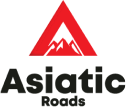
Any Question?
Feel free to call our travel experts.
+977 9851189018, +977 9801089018
info@asiaticroads.com
Accomodations
Accomodation (Hotels envisaged or similar)
| Kathmandu | Hotel | 1 | BB |
|---|---|---|---|
| Nepalgung | Hotel | 1 | BB |
| Jhupal | Tea House | 1 | FB |
| Tarkot | Camping | 1 | FB |
| Laina Odar | Camping | 1 | FB |
| Toitol | Camping | 1 | FB |
| Dhotarap | Camping | 2 | FB |
| Danighar | Camping | 1 | FB |
| Temche | Camping | 2 | FB |
| Chheepka | Camping | 1 | FB |
| Juphal | Tea House | 1 | FB |
| Nepalgung | Hotel | 1 | BB |
| Kathmandu | Hotel | 1 | BB |
18 Days From

Any Question?
Feel free to call our travel experts.
+977 9851189018, +977 9801089018
info@asiaticroads.com
Additional Information
-
How To Train For Trekking
Many people worry that they are not fit enough for long treks, especially in the challenging Himalayan region. However with the right training realistic expectations, and healthy on-trail habits, Himalayan treks is possible for most of healthy hikers. Here are some tips for how to train for trekking in the Himalayas.
START EARLY
You will need to build muscle, endurance and your cardiovascular system. Do no put of training until a month before you leave. It is worth splurging a bit and hiring a trainer who can design a program specifically for what you are doing. If he or she can see you’re hiking Itinerary, even better. They will likely develop a plan that spans several months. Stick with it.
USE A COMBINATION OF EXERCISES
If you choose to develop you own plan (after careful research), use a variety of exercises. Including trail running ensures you will be confident on your feet on uneven terrain. You will also want to include box steps on boxes of varying heights while holding weights. Though you need to build strength to hike 4 to 9 or 10 hours in a day, it is also worthwhile to include sprint intervals, either running or on a bike. This improves your recovery time. Try short bursts of pushing a heavy sled to build your CV system to ensure you don’t feel like throwing up on the trail!! And do not forget your Arms! You should use your trekking poles, and these may give you more of a forearm workout tan you anticipate. Try some triceps extensions, as well as pull ups, rows and dips for your shoulders and back. You will, after all, be carrying a day pack.
STAYING HEALTHY ON TREK
Water is most important part of your hike. Drink at least 3/4 liters of water a day. Ensure yourself you are rehydrating all the time (Dehydration is one of the reason of Acute Mountain Sickness) . Stretch your calves, hips and gluteus any time you stop. This will minimize morning soreness and prevent injury. Bring bio freeze, icy hot, or Tiger Balm for rubbing on sore muscles at night (Tiger Balm is easily available in Kathmandu & Pokhara); these are practically helpful on and behind my knees after steep down hills. No matter what your diet is at your home, eat on a trail. All the teahouses serve pasta, rice, and pizza. Take an advantage of all those carbs. Avoid having alcoholic liquor especially while going up in the High Altitude.
WHEN YOU FINISH
The work you have done hiking will affect you even particularly painful, as your legs may be very restless for several days. Wear compression socks and try to get an aisle seat so you can walk around. After all this, you will definitely come away with a sense of exactly how strong your body is.
-
Clothing & Equipments
WHAT TO WEAR:
Light clothing is only for short treks up to seven days at altitudes up to 6000ft (1830m) during fall (autumn) from September to November and in spring between March to May. The other months at all altitudes will be cold and at most times the temperatures will be below zero.
Footwear:
You will need hiking boots with ankle support, sneakers for flat trails, and flip-flops or chappals for use around the camp/lodge.
Clothes:
Shirts, T-shirts (4), blouse, etc., for daywear and a woolen shirt/T-shirts for evenings.
MEN:
Shorts, cotton trousers, jeans, sweatpants (recon-mended), etc.
Undergarments & Socks:
Thermal underwear and inner trousers for the above 7,000 ft. treks. Thick trek socks.
Warm Clothes:
A light sweater, a windcheater or light lined/padded jacket, and a down jacket or parka for above 7000 ft. treks. Woolen thick cap and warm gloves.
Sun / Rain:
Rain gear or umbrella and a sun hat are essential. Global warming has led to freak weather conditions and it has become more and more difficult to predict weather conditions.
Note: Umbrellas are cheap and easily available in Kathmandu.
HOW TO PACK
In The Day Pack: In the Duffel Bag: Sunglasses Towels Moisturizing/Sunscreen lotion Spare batteries Prescribed medicines Toiletries Flashlight washing soap Camera and spare film Spare clothes all wrapped in plastic bags Binoculars-optional Reading Reference book/Notebook Pencil/Pen / Water bottles/ Trek permits Toilet paper Umbrella/rain gear / Sweater Note: Sleeping bags can be purchased in Kathmandu. It is even available on hire upon request. However, we request our clients to bring their own sleeping bags because of hygiene.
-
Notes On Acute Mountain Sickness
Key to acclimatization: Is adequate hydration, adequate nutrition & managing personal comfort through adequate layers lead to acclimatization.
Following extracts are taken from “The Wilderness First Responder” by Buck Tilton, director of Wilderness Medicine Institute of NOLS, USA
Dehydration
Without water there would be no life – at least no life, as you know it…
Water puddles inside every one of your cells, and flows through the microscopic spaces between cells. In water, oxygen and nutrients float to all parts of your body, and waste products are carried away. When your kidneys remove waste from your body those wastes have to be dissolved in water. Digestion and metabolism are water-based processes, and water is the primary lubricating element in your joints. You even need water to breathe, your lungs requiring moisture to expedite the transfer of oxygen into blood and carbon dioxide out of blood. Sweat, as mentioned, is mostly water. The water in your blood carries heat from warmer body parts to cooler areas of your anatomy when you are exposed to cold. In short, if aren’t well hydrated, you won’t be able to stay healthy, maximize your performance, or even maintain joy at being outdoors.
The water in your body, the fluid that keeps you alive and active, leaves you at an alarming rate. Estimates vary widely, but an average person at rest on a normal day loses between two and three liters of water. One to one-and-a-half liters rushes out as urine, and another one-tenth liter in defecation. Moisture is lost from act of breathing, more than half a liter per day, and that rate increases in dry winter air.
Then there’s sweat. The fluid lost in perspiration can climb to one to two liters per hour during periods of strenuous exercise. Compared to watching TV all day, one hour of exercise may demand approximately a 50 percent increase in the amount of water your body uses.
Your thirst mechanism that feeling of ”Gosh, I need a drink of water”, doesn’t kick in until you’re about one to one-and-a-half liters low. Down three to four liters can leave your endurance decreased to 50 percent and your oxygen uptake reduced close to 25 percent…
Acclimatization
The medical problems collectively referred to, as “altitude illnesses” is the result of hypoxia, insufficient oxygen in the blood for normal tissue function, a result of the decreased barometric pressure at higher altitudes. When you go up, the barometric pressure goes down, the concentration of oxygen in the air decreases, and the chance of altitude illness climbs.
Since there is a measurable increase in ventilation and decrease in aerobic exercise performance above 4,000 feet elevation, “high altitude” can be said to start at that point. Complications seldom occur, however, below 8,000 feet. In defining terms, consider 8,000 to 12,000 feet as high altitude, 12,000 to 18,000 as very high altitude, and 18,000 plus as extreme high altitude.
The human body will adjust to dramatic changes in barometric pressure, given enough time. Altitude illnesses – which range from mildly disturbing to completely fatal – are determined, primarily, by three factors:
How high the patient goes.
- How fast the patient attains a specific altitude, and
- Predisposing factors such as genetics and previous upper respiratory illnesses.
- Critical to acclimatization is adequate hydration and nutrition.
PREVENTION:
As mentioned earlier, most people will adjust to altitude given enough time. Staged ascent is the key to acclimatization and, therefore, the key to preventing altitude illnesses.
Adequate hydration is critical to the prevention of altitude illnesses. You should drink enough water to keep your urine output clear and copious.
A high calorie diet is essential for the energy needed to ascend and acclimatize.
Avoid respiratory depressants, such as sleeping pills and alcohol.
…But physical fitness prior to ascent is a bonus in the game of safety and enjoyment. Fitness does not, however, protect against acute mountain sickness.
(Friends: this is just to inform you about these important factors that we would be dealing in on the mountain. I know that there would be a lot of questions in your mind – how does one acclimatize, what food is to be taken, what are the early signs and symptoms that would alert me to start taking extra efforts to stay hydrated/acclimatized, etc. etc.)
-
Notes For Trekkers / Travellers
Dear Guests,
Namaste & warm Greetings from Nepal!!We are very pleased that you have inquired for your trek with Asiatic Roads. The idea of this hand out is to furnish you with information for your pre-trek preparations.
Firstly, we recommend that you travel light. A good-sized duffel bag with a top length zipper that can lock is best, together with a day pack for carrying personal items on the trek. An extra smaller bag would be handy to carry back your souvenirs after the trip.
AFTER ARRIVAL IN KATHMANDU
1. TREK BRIEFING:
On your arrival in Kathmandu, we will arrange to meet for a pre-trek briefing. Full information on all aspects of your trek, questions and doubts will be discussed. On trek your Sherpa leader (sardar) will give you more details about the route, villages, people and other information regarding the trek.2. PACKING:
You may leave behind part of your luggage in your hotel or our locker room before the trek, in Kathmandu. All baggage is to be clearly marked and locked. Kindly refrain from carrying or wearing valuables on the trek. You may leave them behind at the safety deposit box at your hotel or with us.3. HOW TO PACK:
Your clothes and equipment should fall into the following 4 categories:1. What you are going to leave behind in Kathmandu.
2. What you are going to wear on the trail.
3. What you are going to carry in your day pack.
4. What you would like the porters to carry for you.Excess clothes and luggage can be stored in your hotel’s storeroom, and valuables in the safety deposit box. Please label your luggage and make sure to take a receipt from the front desk of your hotel for all the things you would like to leave behind while you are away.
ON TREK
1. YOUR STAFF ON THE TRIP:
Will consist of one English speaking Sirdar (Guide) and Assistance Guide or Escort who will be wholly responsible for the execution of the trip once it hits the trail. He will be assisted by Sherpa(s) as necessary.2. WHAT TO CARRY DURING THE TREK:
Your daypack, preferably waterproof should be light, small and comfortable. All small personal items like toilet paper, water bottle, medicines, extra shirt, light warm wears, rain gear, gloves etc. that may be needed for the days trek should be packed. Your duffel will be carried by porters who may not be with you at all times.3. MONEY ON TREK:
You may want to buy drinks at wayside shops and souvenirs from the natives. Small change should be carried. As customary, we can help discuss in detail in the pre-trek briefing.TREK KIT LIST
WHAT TO WEAR:
Light clothing are only for short treks up to seven days at altitudes up to 6000ft (1830m) during fall (autumn) from September to November and in spring between March to May. The other months at all altitudes will be cold and at most times the temperatures will be below zero.Footwear:
You will need hiking boots with ankle support, sneakers for flat trails and flip-flops or chappals for use around the camp/lodge.Clothes:
Shirts, T-shirts (4), blouse, etc., for daywear and a woolen shirt/T-shirts for evenings.MEN: Shorts, cotton trousers, jeans, sweat pant (recon-mended) etc.
Undergarments & Socks:
Thermal underwear and inner trouser for the above 7,000 ft. treks. Thick trek socks.Warm Clothes:
A light sweater, a windcheater or light lined/padded jacket and down jacket or parka for above 7000 ft. treks. Woolen thick cap and warm gloves.Sun / Rain:
Rain gear or umbrella and a sun hat is essential. Global warming has led to freak weather conditions and it has become more and more difficult to predict weather conditions.
Note: Umbrellas are cheap and easily available in Kathmandu.HOW TO PACK
In The Day Pack: In the Duffel Bag:
Sun glasses Towels
Moisturizing/Sun screen lotion Spare batteries
Prescribed medicines Toiletries
Flash light washing soap
Camera and spare film Spare clothes all wrapped in plastic bags
Binoculars-optional
Reading Reference book/Note book
Pencil/Pen / Water bottles/ Trek permits
Toilet paper
Umbrella/rain gear / SweaterNote: Sleeping bags can be purchased in Kathmandu. It is even available on hire upon request. However, we request our clients to bring their own sleeping bags because of hygiene.
ADDITIONAL ITEMS:
For most treks from mid-November till mid-February and for those above 10,000 ft. /3000 m., in Spring and Autumn, anti-dazzle glasses or goggles with side attachments are recommended and High altitude food supplements (favorite snacks) if necessary.IMPORTANT NOTE:
In the event of an accident or serious ailment on a trek, helicopter evacuation can be arranged. The helicopter fare with 10% service charge and the hospital/medical charge will have to be cleared before departing from Kathmandu. A risk, release and guarantee form has to be signed before leaving on a trek with us.INSURANCE:
There are no reliable medical insurance policies in Nepal for foreigners. We strongly recommend you to take comprehensive holiday insurance in your own country covering adventures involving some elements of risk, especially to cover Emergency Helicopter Evacuation.BOOKS:
Trekking in the Nepal Himalayas by Stan Armington published by the Lonely Planets books provides you comprehensive information on all matters regarding trekking in Nepal
The Trekkers Peaks of Nepal by Bill O’Connor published by Crow Wood press in U.K. provides you with information on all matters regarding climbing peaks in Nepal.
Trekking in Nepal by Toru Nakano published by Allied Publishers gives you some insight into some important trekking areas in Nepal. A map of Nepal is enclosed in the book. -
Nepal Visa Information
Updating Soon!!!!
18 Days From

Any Question?
Feel free to call our travel experts.
+977 9851189018, +977 9801089018
info@asiaticroads.com
Reviews
In my 2 week stay, John was very professional and took me around to experience all that Kathmandu and surrounding areas has to offer. Sites were seen and many locals were met through John’s network.

Steven Stone
TravellerIn my 2 week stay, John was very professional and took me around to experience all that Kathmandu and surrounding areas has to offer. Sites were seen and many locals were met through John’s network.

Steven Stone
Traveller18 Days From

